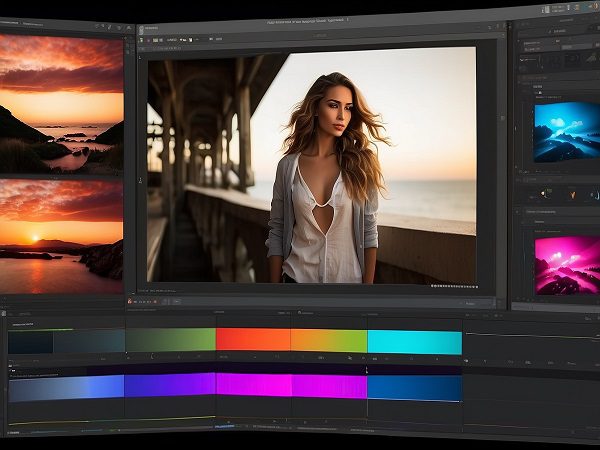Introduction
In the realm of video editing, color grading holds a paramount position. It’s not just about adjusting hues and tones; it’s about crafting a mood, evoking emotions, and enhancing the storytelling aspect of your footage. Whether you’re a novice or a seasoned professional, mastering color grading can take your videos to the next level. Let’s delve into the intricacies of color grading and explore how it can transform your footage.
Understanding Color Grading
Color grading is the process of altering and enhancing the color and tone of a video to achieve a desired look. It involves adjusting parameters such as brightness, contrast, saturation, and color balance. By manipulating these elements, editors can create a cohesive visual style that aligns with the narrative and aesthetic of the project.
Setting the Mood
One of the primary objectives of color grading is to set the mood of the video. Whether it’s a gritty urban drama or a whimsical fantasy, the color palette plays a crucial role in establishing the atmosphere. Warm tones can evoke feelings of nostalgia and intimacy, while cooler hues can convey a sense of detachment or melancholy. By carefully selecting and manipulating colors, editors can elicit specific emotional responses from the audience.
Enhancing Contrast and Depth
Another key aspect of color grading is enhancing contrast and depth. By adjusting the brightness and contrast levels, editors can make certain elements of the image pop while pushing others into the background. This technique helps draw the viewer’s attention to the focal points of the scene and creates a sense of depth and dimensionality.
Creating Consistency
Consistency is essential in video editing, especially when working on projects with multiple scenes or shots. Color grading allows editors to maintain visual continuity throughout the video by ensuring that all footage adheres to the same color palette and tone. This cohesiveness helps create a seamless viewing experience and reinforces the overall aesthetic of the project.
Emphasizing Narrative Themes
Color grading can also be used to emphasize narrative themes and motifs within the video. For example, a filmmaker may use desaturated colors to convey a sense of bleakness and despair in a post-apocalyptic setting, or vibrant, saturated hues to depict the vibrancy and energy of a bustling cityscape. By aligning the color palette with the underlying themes of the story, editors can enhance the narrative impact of the video.
Tools and Techniques
Mastering color grading requires a combination of technical expertise and creative intuition. Fortunately, modern video editing software offers a plethora of tools and techniques to help editors achieve their desired look. From basic color correction tools to advanced grading plugins, there’s no shortage of options available to aspiring colorists.
Experimentation and Practice
Like any skill, mastering color grading takes time and practice. Don’t be afraid to experiment with different techniques and approaches to find what works best for your project. Take advantage of online tutorials, workshops, and forums to expand your knowledge and learn from others in the industry. With dedication and perseverance, you can unlock the full potential of color grading and take your videos to new heights.
Conclusion
Color grading is a powerful tool that can transform your footage and elevate the quality of your videos. By understanding the principles of color theory, experimenting with different techniques, and honing your skills through practice, you can master the art of color grading and create visually stunning videos that captivate and engage your audience. So, roll up your sleeves, fire up your editing software, and start exploring the endless possibilities of color grading today!



































